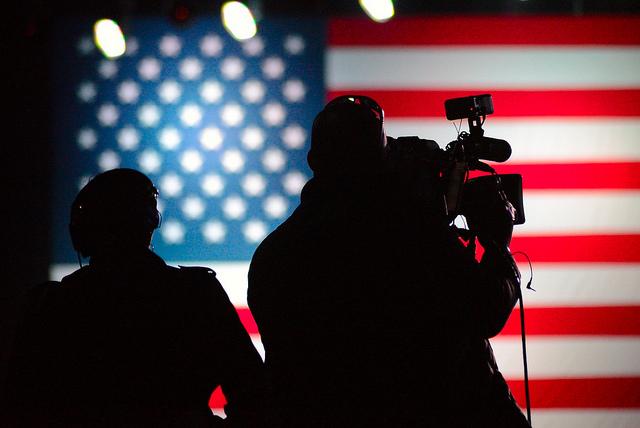
Hillary Clinton began her campaign for the Democratic nomination for president as the undisputed favorite, but Bernie Sanders—a self-avowed socialist—proved to be a significant challenge. Donald Trump started his campaign for the Republican nomination as an entertaining underdog but rode a tidal wave of support to victory, including beating, early in the race, the odds-on favorite Jeb Bush. What’s going on in American politics?
I spent my career analysing the politics of other countries, so let me apply some of what I’ve learned to my own country. Based on my reading of US political polling and of the behavior of American voters themselves, I believe there are three significant dynamics underway in the US that’ve come together to create this particularly unique moment in the history of American politics.
The first and most important dynamic is economic—economic insecurity and inequality. Inflation-adjusted incomes have fallen for the majority of households in America for a generation. In a recent poll conducted by the US Federal Reserve Bank, nearly half of those surveyed don’t know where they would get US$400 if they needed it in an emergency.
At the same time, the distribution of income has become much more unequal—a significant deterioration over the last few decades. Income distribution in the US is now among the worst of developed countries. It has fallen behind both China and India according to the World Bank.
Here’s what’s happening from an economist’s point of view. There’s an excess demand for high skilled workers (too few of them) and an excess supply of unskilled workers (too many of them). There are some 20 million people unemployed in the US, most of them unskilled. And there are four million unfilled jobs, a majority of them requiring skilled workers. This situation is driving down wages for unskilled workers and pushing up wages for skilled workers. Why has that been happening? Fairly simple. The education system in America hasn’t kept up with the rapid advances in technology and globalisation.
People on the losing end of that dynamic are deeply frustrated, and they spoke loudly during the primaries. They voted for candidates who have advocated populist approaches to economic insecurity and income inequality. They voted for Bernie Sanders, who essentially said he would take money from the rich and give it to the poor—income redistribution. Or they voted for Donald Trump, who said he would fix it by making better trade deals—protectionism to keep jobs in the US. Together, Sanders and Trump garnered nearly 45% of all the votes cast in the primaries.
The second dynamic, related to but also broader than the first, is a belief among a majority of voters that the political system has failed the country, that elected officials aren’t coming together, compromising, and making decisions that move the US economy and society forward. The last two complete sessions of the US Congress (2011–2012 and 2013–2014) enacted an average of 290 laws—only one-third to one-half the productivity of earlier Congresses. And the number of laws enacted for the current Congress (2015–2016) is running even lower.
Many voters simply don’t believe that career politicians have delivered for the country. It’s this second dynamic that led so many voters to support non-establishment candidates in the primaries. Of the 60 million votes cast in both the Democratic and Republican primaries, 35 million were cast for non-establishment candidates—a whopping 58%.
The third dynamic is a fear among some uneducated white voters about the rapid growth in the share of minorities in the population and their growing role in American society—best manifested by Barack Obama’s election as president. A 2014 study by researchers from Northwestern University found that the shrinking white majority in the country is of concern to many white Americans. There’s no doubt that Donald Trump’s xenophobic rhetoric has attracted some of those voters.
As we enter the race between Donald Trump and Hillary Clinton for the presidency, it’s clear that Trump has the three dynamics on his side. For her part, Clinton has on her side those Americans who are concerned about Trump’s shoot-from-the-hip approach to issues and his condemnation of many groups in American society, the unavoidable by-product of his xenophobia. She also has on her side those Americans—both Democrat and Republican— who aren’t swayed by the three dynamics and who believe her more pragmatic, centrist approach to issues will be best for the country.
The politics of 2016 America remind me of the politics of a good number of other countries that I’ve watched over the years, where similar economic and political problems led voters to look for easy answers and led voters to support candidates with simplistic, populist messages. The irony, of course, is that in the vast majority of those countries where populists have been elected—Venezuela under Chavez and Zimbabwe under Mugabe come to mind—the problems haven’t been solved. Indeed, they’ve gotten worse. In November, we’ll see what direction Americans choose to go.